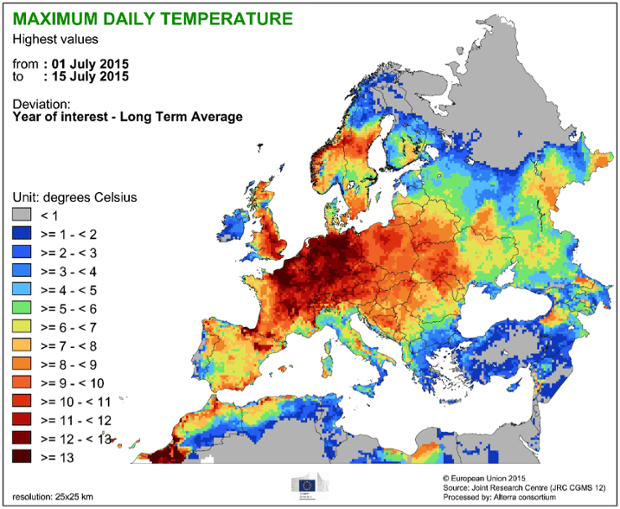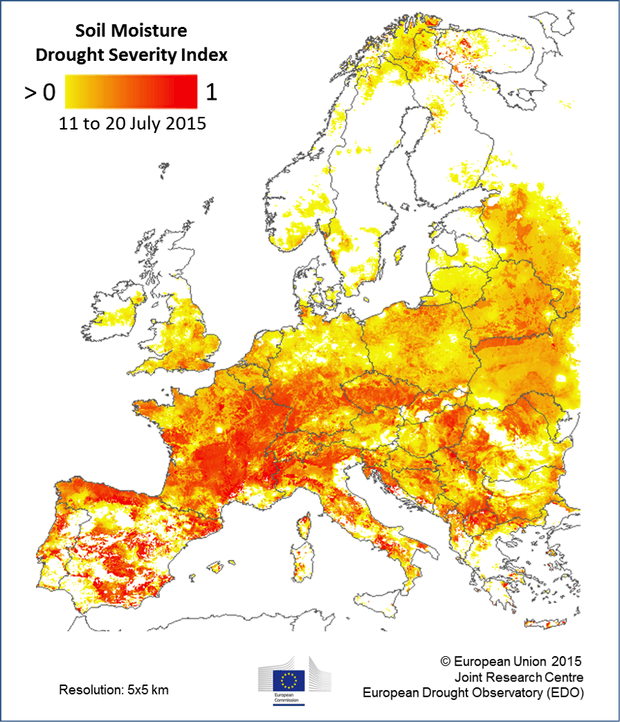
Europe has undergone a severe drought this summer, the worst in over a decade. Temperatures have been high across the continent, and have combined with low rainfalls. This drought, like the one in 2012 in the United States, are a sign of what our future holds in a warming world.
As humans emit greenhouse gases, the world warms. We already know that. But a warming world is also host to other changes. Among the most important changes are those to the water cycle. Scientists refer to this as the hydrological cycle – basically changes to the storage of water in the soil and underground, the evaporation of water into the atmosphere, and the subsequent rainfall and runoff that occurs.
A warmer atmosphere can hold more moisture, as people know through the personal experience of high humidity in warm months. Changes to humidity have been measured over the past decades and confirm our expectations. These changes lead to increased rainfall.
At the same time, higher temperatures accelerate evaporation, which dries out the soil and plants and can create drought conditions.
We see then that competing factors are in play. On the one hand, we expect there to be more intense rainfall. On the other hand, we expect more drying. Which process wins depends on where you live. The prevailing view is that areas which are currently wet will become wetter. Areas that are currently dry will become drier. Finally, rainfall will occur in heavier doses.
A recent report has been released about current conditions in Europe and in particular, on the 2015 heat wave and drought. The organization (European Drought Observatory) has an online report which is easy to obtain and read here. They report that very hot weather in Europe during June and July 2015 affected France, Belgium, The Netherlands, Luxembourg, Germany, Hungary, the Czech Republic, Italy and Spain.
High temperatures combined with low rainfall have created very dry conditions. Not only were temperatures high, but they remained high for a long time, particularly in parts of Spain. The images below show which regions have been hotter than normal (yellow, orange, and red colors) as well as which areas have been drier than normal (yellow, orange, and red). Both regions extend across a wide swath of Europe.

Warmer and colder regions than normal. Source: European Drought Observatory.

Drier soils than normal. Source: European Drought Observatory.
Countries are dealing with the water shortage by placing restrictions on water use, especially in the agricultural sector. However, the lack of water is also affecting public water supply, river transportation, natural habitats, plants, animals, and insects, and power supply.
But it could get worse. Long-range weather forecasts are for continued warm and dry conditions through September. Future rain is particularly important for vegetation. As the report states,
Posted by John Abraham on Wednesday, 9 September, 2015
 |
The Skeptical Science website by Skeptical Science is licensed under a Creative Commons Attribution 3.0 Unported License. |